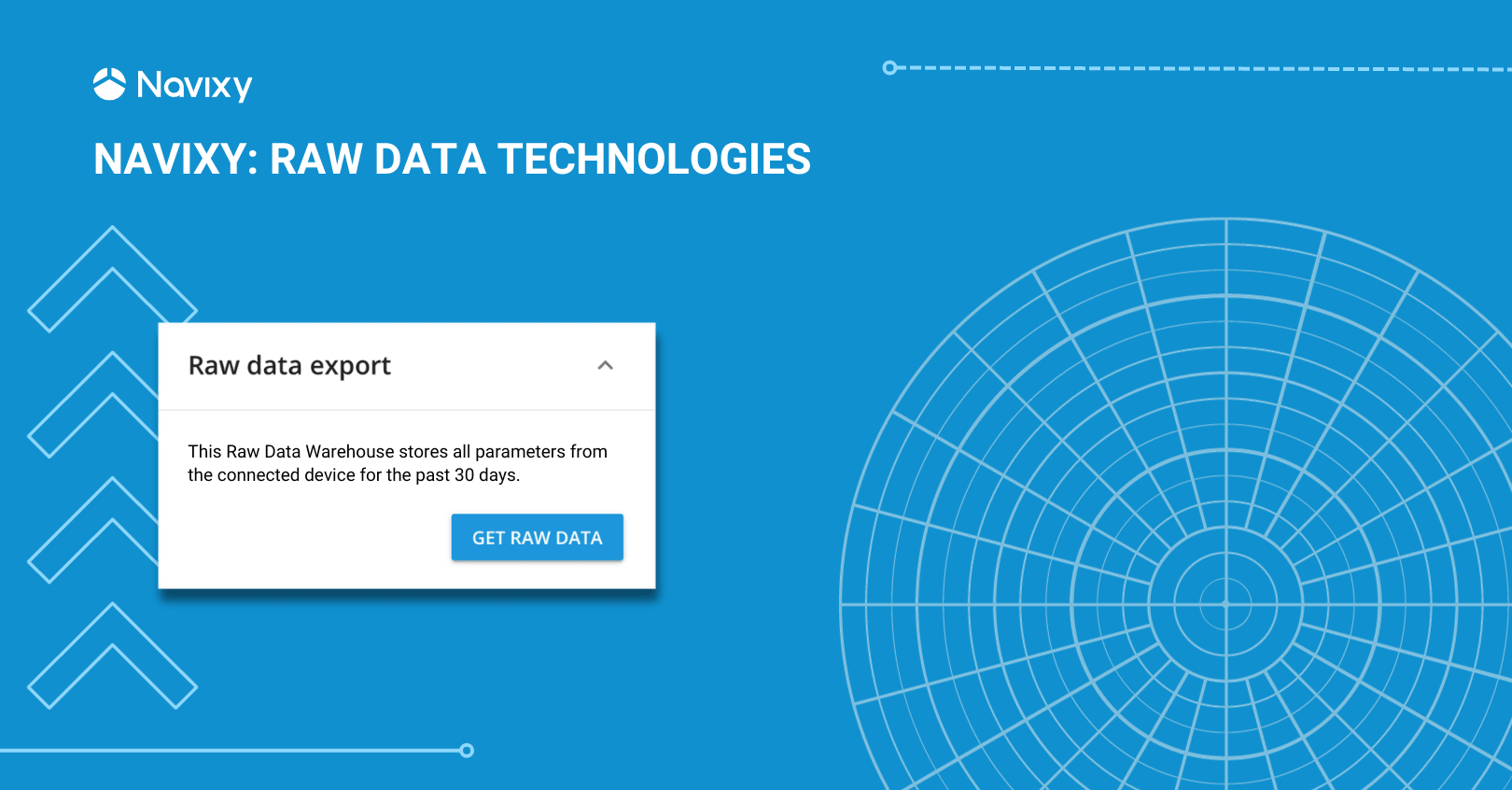Navixy: Raw Data Technologies

Building on the insights from our previous article "Navixy Raw Data feature: a game-changer across industries" this piece explores Navixy's approach to leveraging raw data in telematics. As the original, unaltered data from GPS trackers, raw data is essential for TSPs, integrators, and developers who demand an unadulterated view for accurate analysis and device troubleshooting.
Raw Data overview
Raw data in GPS tracking is the original, unaltered data from GPS trackers, essential for TSPs, integrators, and developers who need a clear, unprocessed view of information.
This raw data is crucial for understanding the intricacies of the data collected and for diagnosing device malfunctions. As technology advances, particularly in AI and machine learning, raw data finds new uses in various business systems like CRM and ERP for deeper analysis and broader application.
The benefits of accessing raw data are manifold; it not only speeds up troubleshooting, leading to faster problem resolution and increased customer trust but also frees up time for innovation.
At Navixy, we're taking raw data to new heights. Based on partner feedback and experiments in the Navixy Lab, we're focusing on parsing and decoding this data while considering the protocol and device specifics. This process transforms the data into universal parameters like latitude and longitude, enabling sophisticated and tailored uses in GPS tracking.
Typical use cases for raw data export
As mentioned, this new tool is handy for anyone using GPS trackers. Now, let's talk about some of the ways you might use this tool.
Analytics, machine learning, and AI integration
Incoming data from GPS trackers is provided in CSV form that machines can read and process. There are endless ways to use this data, such as monitoring vehicle usage, resource allocation, fuel efficiency, and generating heat maps.
GPS tracker configuration analysis
Users can examine their GPS tracker settings by analysing data parameters. This helps you understand whether specific parameters are configured correctly for data transmission and reception. For instance, if there's no data, the parameter isn't set to send, or the sensor has been disconnected from the GPS device and is sending an error code or no information.
Sensor data diagnostics
By accessing unaltered sensor data, users can diagnose issues more precisely. For example, if the fuel sensor contacts have rusted, the platform might get distorted fuel level readings. It's much harder to spot these changes using calibrated data and fuel level change reports than raw data. So, the downloaded data will be beneficial for fine-tuning and fixing incorrect operations.
Diagnostics for rules triggering
Users can monitor how devices process events by tracking event IDs. You can try manually triggering an event and test if the platform triggers it and the device sends data about it.
Device offline diagnostics
This feature enhances the ability to determine why a device might be offline. For example, if the device stops showing up on the platform, exporting raw data allows you to troubleshoot and see information about signal strength and battery levels being sent to the platform before it disconnects. Users can track historical readings for all parameters at once to find possible reasons for the device disconnecting or not getting data from the device by downloading a CSV file.
Custom solutions for customers
The tool enables the creation of tailored solutions for your customers. For example, integrating different device data readings into a single analytical report or using the data in platforms like Grafana or PowerBi for advanced analytics.
Conclusion
To sum up, Navixy's approach to raw data in GPS tracking provides a clear view of the information landscape. It opens up new avenues for innovation and efficient problem-solving. Our focus on raw data export is a transformative step in enhancing GPS tracking technology, improving problem-solving capabilities, and fostering innovation.
